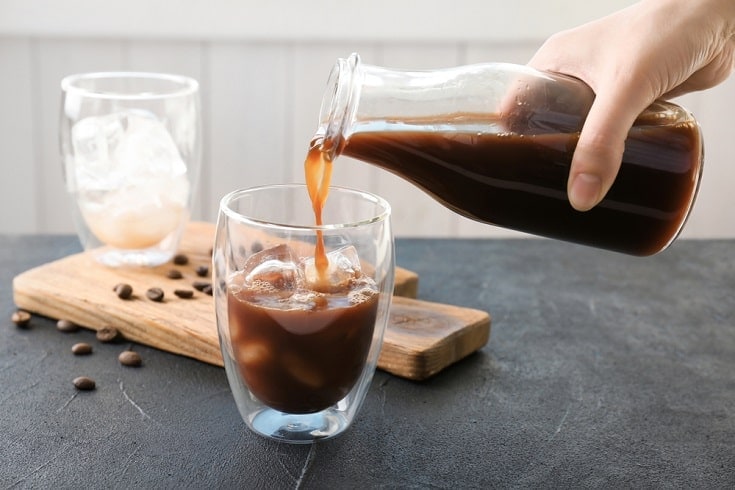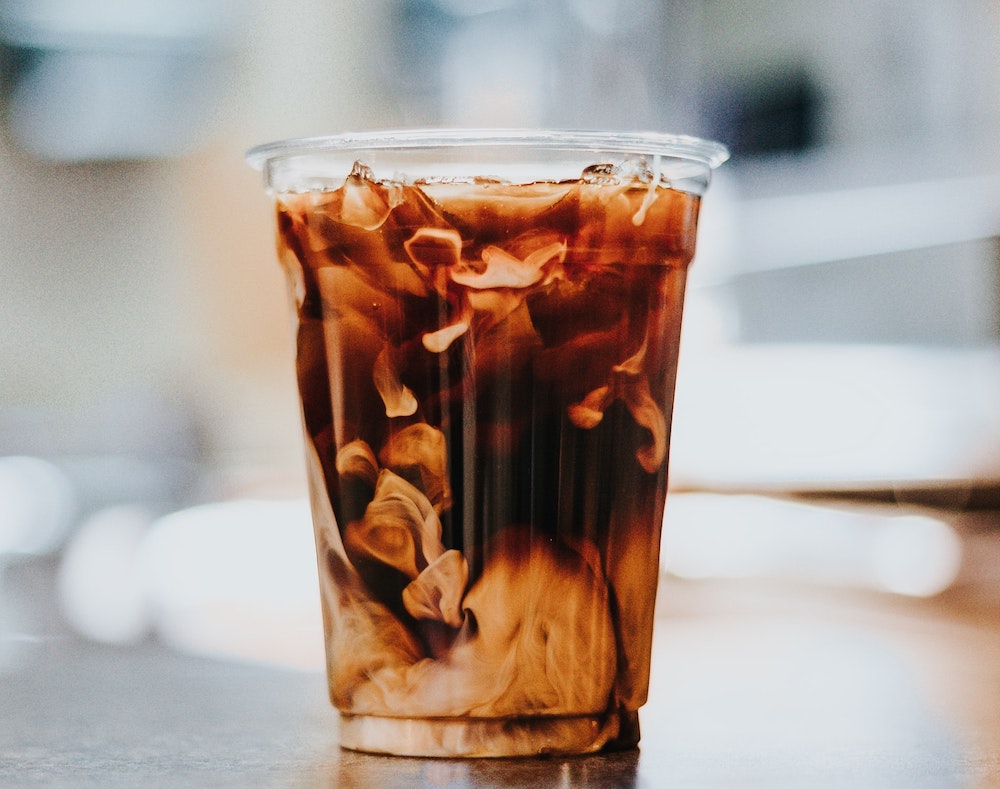
Cold brew is one of our favorite ways to make coffee. It’s sweet, smooth, and has lower acidity than traditional brewing methods. Cold brew is also easy to whip up in large batches, making it great for preparing coffee for the entire week on Sunday to save time on hectic mornings.
The only thing we don’t like about cold brew is how long it takes to steep. Most cold brew recipes require at least 12 hours but more often take between 16 and 24 hours. Sometimes you might want to make cold brew without having to wait until tomorrow to drink it. That’s where sous vide cold brew comes in.
Getting Started: What is Sous Vide?
Sous vide is a cooking style that uses a bath of low-temperature water to cook food over several hours. If you want to make sous vide cold brew, you’ll want to start by purchasing a sous vide cooker. It lets you regulate the temperature of a water bath so that you get an even extraction with reproducible results.
We’ve found that the best temperature to use for sous vide cold brew is 150ºF. For comparison, ordinary cold brew is made at room temperature – around 70ºF – and hot coffee is brewed near-boiling – 205-212ºF. The sous vide method sits right in the middle and gives you the best of both worlds.
Sous vide cold brew preserves the low acidity and smooth texture of cold brew but drastically reduces the amount of time required. Our best results came from brews of between two and four hours, and we recommend starting with two hours. That’s up to 10 times faster than some regular cold brew recipes!

Before you get started, you’ll need a few things:
- Fresh coffee beans
- Water
- Sous vide cooker
- Grinder (or coarsely ground coffee)
- Kitchen scale
- Mason jar or another sealable container
- Paper filter if you’re going to store the coffee for several days
How to Make Sous Vide Cold Brew:
We like to use a 7:1 water-to-coffee ratio for all of our cold brews. You can make as much or as little coffee as you like but make sure you can fit enough coffee and water in your sealable jar before you start. If you’re using a standard mason jar, 12 ounces/350 g of water and 1.75 ounces/50g of coffee is a good amount.
https://www.instagram.com/p/BoFm4glBn20/?utm_source=ig_web_button_share_sheet
1. Grind your coffee.
Grind however much coffee you’re going to use in a very coarse setting. At least as coarse as you would use for a French press or even slightly coarser.
2. Add water and coffee to your mason jar.
Fill each mason jar with 350 g water and 50 g coffee.
3. Close the jar.
Seal the jars. Be careful not to overtighten the lids.
4. Put your jar in the sous vide bath.
Place the jars in a 150ºF bath and set a timer for 2 hours.
5. Filter your coffee.
Filter the coffee. The easiest way is to pour each jar through a Chemex filter. One Chemex filter can get you through several mason jars before it clogs and you need a new one. Any coffee filtering method will work, though.
Making adjustments
After you try our recipe, you might want to tweak it a bit and make it your own. There are many knobs you can turn – the amount of coffee, temperature, steep time – but to keep it simple, we have a few suggestions.
Under-extraction
If your coffee is weak or under-extracted, we recommend adjusting the steeping time before changing anything else. Start by increasing the time from 2 to 2.5 hours and see how the taste changes. Underextracted coffee usually tastes sour, and thin, and sometimes even has a vegetal flavor to it.
You can also increase the temperature to combat under-extraction, but the higher you go, the less cold brew-like your coffee will be. We don’t advise you to go any higher than 175ºF as that’s where we found a significant increase in acidity in our batches.

Over-extraction
On the other hand, your cold brew could be over-extracted. Signs that you may be extracting too much are harsh, bitter flavors and a gritty texture. We didn’t run into this problem in any of our batches, but we kept the temperature close to 150ºF for all of them. If you adjust the temperature, you’re more likely to get over-extracted coffee.
You can do the opposite of what we recommend for under-extraction to fix over-extraction – use lower temperatures and steep for a smaller amount of time.
Grind size
We mentioned before that you want to use coarse ground coffee for sous vide cold brew. Our recommendation is to grind at least as coarse as you would for French press or slightly coarser.
If you don’t have a grinder, look for coffee that comes pre-ground for French press. Some brands will say coarse ground directly, and those should work well too. It is important to use coarse ground coffee rather than coffee ground for an automatic drip machine. If you use standard size grounds, your cold brew will be muddy and very over-extracted.

Sous Vide Cold Brew
Equipment
- Sous vide cooker
- Grinder (or coarsely ground coffee)
- Kitchen scale
- Mason jar or another sealable container
- Paper filter if you’re going to store the coffee for several days
Ingredients
- 1.75 ounces fresh coffee beans
- 12 ounces water
Instructions
- Grind your coffee on a very coarse setting. At least as coarse as you would use for French press or even slightly coarser.
- Add water and coffee to your mason jar.
- Seal the jar. Be careful not to overtighten the lid.
- Put your jar in a 150º F sous vide bath. Set a timer for 2 hours.
- When it's finished brewing, filter the coffee. The easiest way is to pour each jar through a Chemex filter. One Chemex filter can get you through several mason jars before it clogs and you need a new one. Any coffee filtering method will work, though.
Notes
Nutrition
Conclusion
Sous vide cold brew is a happy medium between the agonizingly slow regular cold brew method and a traditional hot brew’s high acidity. You get all of the chocolatey sweetness of cold brew in a fraction of the time with only slightly more effort. We have recently become big fans of sous vide cold brew and love making a big batch over the weekend to save time during the week.
We hope you’ve enjoyed this guide and that we’ve inspired you to try sous vide cold brew. It’s quickly becoming one of our favorite brewing methods, and if you give it a try, we promise you won’t be disappointed. Time to start brewing!
Looking for more? Try: Dutch Cold Brew Coffee: What Is It & How to Make It?
Featured Image: New Africa, Shutterstock
















